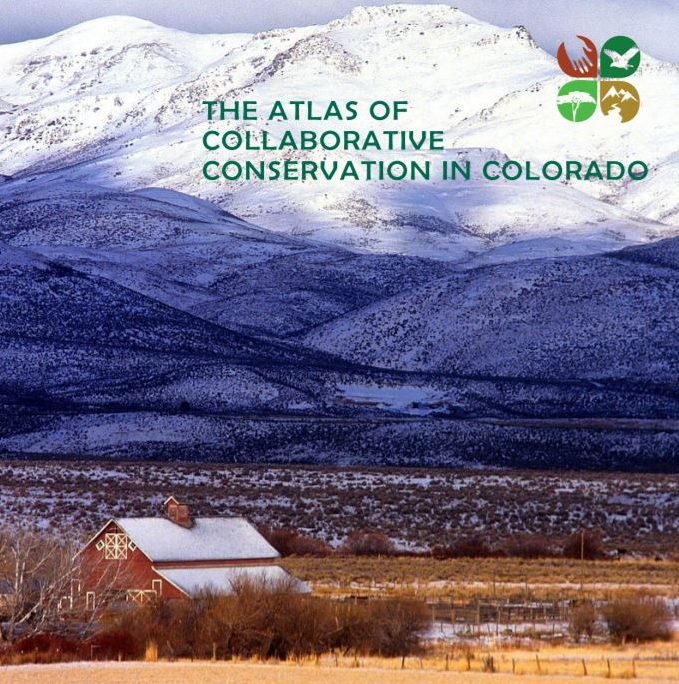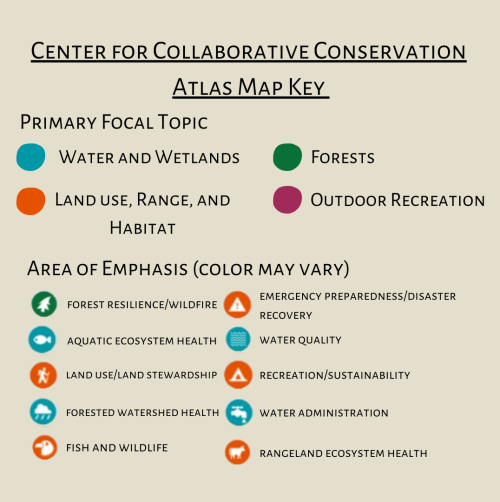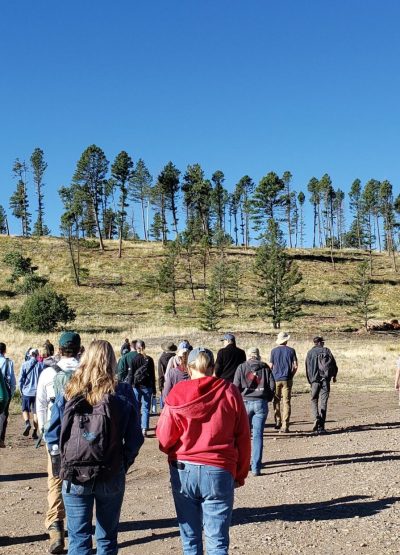We first began the research for the Collaborative Conservation Atlas project back in 2013 with the goal of identifying and systematically describing collaborative initiatives across the state to gain a better understanding of ‘who is doing what, where?’ As of 2023, we have identified 250+ long-term collaborative and multi-stakeholder initiatives working across the state on many different kinds and combinations of natural resource, recreation and sustainability, and environmental issues. While each group is unique, the initiatives in our study share the following characteristics:
Our research and findings on how and why collaboratives get started, and what organizational models they adopt to achieve their shared objectives are described in our final report found here.



The Atlas of Collaborative Conservation in Colorado charts the landscape of the state’s many collaborative conservation initiatives, which are incredibly diverse in form and function. In this report, we compare and contrast the problems and issues collaboratives form to address, the activities they work on together, their founding leadership and members, and how they organize themselves. The report, which is unique in its statewide focus on such a broad range of collaboratives, adds to a growing body of knowledge about how collaboration happens at different scales and in different regions.

We found that Colorado is rich with collaboratives, working on a wide array of issues. Over the last 40 years, more than 180 collaboratives have formed, with at least 157 still active today. They come together to address complex environmental and social issues that one organization or individual cannot address alone. These issues are usually wide-ranging and cross ownership boundaries, like flowing water, wildfires, migrating fish and wildlife, or weed spread. Collaboration is often triggered by government policies associated with these issues (like regulatory threats, funding incentives, or mandates), and also by environmental problems, risks, or crises that impact safety, life, and property.
The people responsible for bringing collaboratives together represent individuals, industry, non-government organizations, and government agencies. They can work at the local, state, federal and tribal level, and can be combinations of government and non-government organizations. By working together with different kinds of members, collaboratives harness the power of broad and intersecting networks, pooled brain power and financial resources, and diverse decision-making authority. Together, they are learning and sharing information through monitoring, research and education, planning for change and resilience, developing and piloting innovative conservation tools and technologies, and strengthening relationships across the state of Colorado and beyond.
Access the full report here. Please also view Ch’aska Huayhuaca’s dissertation “The state of collaboration: an analysis of form and function in Colorado’s natural resource collaboratives” here.
363 Michael Smith Building
Warner College of Natural Resources
1401 Campus Delivery,
Colorado State University
Fort Collins, CO 80523
SEE MAP

Apply to CSU | Contact CSU | Disclaimer | Equal Opportunity | Privacy Statement
© 2021 Colorado State University